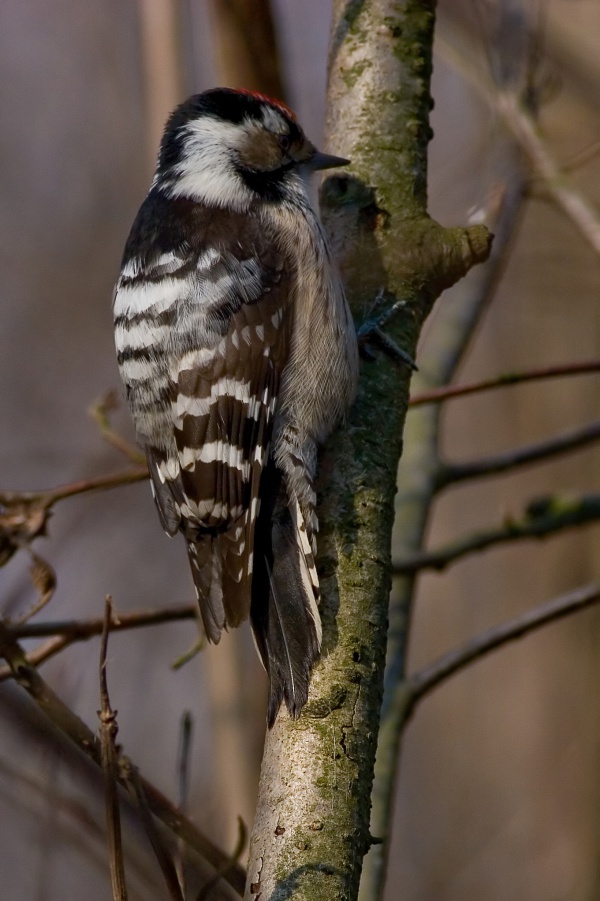Facts About Lesser spotted woodpecker
The lesser spotted woodpecker, a delightful avian member of the family Picidae, has an intriguing classification history. Initially placed in the genus Dendrocopos, it was reclassified in 2015 to the genus Dryobates following a comprehensive study. This diminutive woodpecker, first described by Carl Linnaeus in 1758 as Picus minor, comprises 13 recognized subspecies and inhabits the Palearctic region.
In terms of appearance, male lesser spotted woodpeckers are easily recognized by their striking crimson crowns. Females, in contrast, possess white crowns, while juveniles exhibit a mix of crimson on their heads. These small birds are typically observed high up in tree canopies. Their behavior closely mirrors that of the great spotted woodpecker, and they are renowned for their distinctive "keek" call. Their diet primarily consists of wood-boring larvae and surface-dwelling insects on trees.
For nesting, these woodpeckers generally select sites high above the ground. Both parents share the responsibilities of incubating their clutch of 5-8 white eggs. Though mainly resident birds, they can exhibit some nomadic tendencies, particularly when food sources are inconsistent. Their population numbers can fluctuate significantly, often influenced by winter temperatures and food availability.
In the UK, the lesser spotted woodpecker population has experienced a decline, largely due to habitat loss, particularly the removal of decaying wood, which is vital for their nesting and feeding. Monitoring these factors is crucial for their conservation.

 Ireland
Ireland